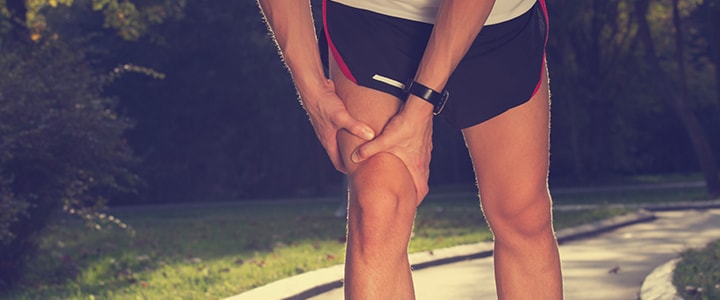Suffering From Exercise or Sport Pain?
Here's How to "Move" Towards a More Positive Experience
Many people avoid exercise, sports or any physical activity during the crippling cold winter months – and then, as soon as the weather improves, they jump right into a high-intensity workout routine! Are you one of those people? (It happens to the best of us).

Whether you're getting back into running, cycling or lifting weights – an abrupt and hard rush back into the active groove can put the body at risk for experiencing severe pain later on. This, in turn, can elicit a negative outlook on physical activity – and may turn you off from any further progress. So, how can you avoid unbearable sport and exercise-related pain? Read on to find out.
Building Up Your Endurance
While the body definitely appreciates exercise and movement, you may not always be able to sense that you're overworking it until later on. With endorphins and positive feelings running high, you can become distracted and accidentally push your body beyond its limits – ultimately straining your muscles and putting excess stress on the body.It's important to slowly build up your muscle strength, endurance and overall fitness each day, especially if you haven't been very active for a while. Listen to your body and give it the opportunity to adapt. It may take a while, but you'll be on the right track to healthy progress soon enough.
Preventing Potential Injuries
It's beneficial to mix up your routine, or increase the time or intensity of your workout by a manageable amount each day. For example, if you're getting back into jogging, slowly and gradually build up your pace the first day by walking for two laps, and then running for one. Then, next time, increase your running time to two laps. (Apply this principle to your individual unique fitness goals, of course)!
Win the Fight Against Muscle Cramps
Muscle cramps can sometimes result due to low levels of magnesium or potassium, or an imbalance of electrolytes in the body. This can especially be brought on by excess sweating through exercise. Eating foods that are rich in potassium, such as bananas, lentils, peas, broccoli, white beans, sweet potatoes and spinach can help to prevent muscle cramps.
Some Things May Not Be as Effective as Once Believed...
While many believe that other methods such as stretching before a workout, or applying iceto an injured area can be very beneficial for sore muscles – there's actually some controversy around the subjects.
Stretching, for one, is great for the muscles in terms of improving flexibility… but static stretching before a workout may weaken the muscles temporarily, or even make them more prone to injury. The smartest thing to do before enduring in a good sweat session is to warm up – e.g. with a brisk walk or a slow jog for a brief 5-10 minutes to prepare the body for what's to come. A simple warm up such as brisk walking or a slow jog will not only bring a healthy flow of blood to the muscles, but will help to extend your range of movement while you workout. In addition, practice a gradual cool down after every workout to also help prevent potential cramping.
On the other hand, although icing can provide some temporary relief for many, it may not be the best action to take in the long run. Applying ice directly to a muscle strain or inflammation after injury has actually been found to slow down the body's natural healing process as opposed to speeding it up – and it surely doesn't reduce inflammation.
And what about applying heat? Well, heat therapy can be beneficial when used correctly. For example, applying a heating pad for 10 minutes, or enjoying a hot soak can help to reduce tightness, improve circulation and promote relaxation. And here's some interesting news: directly following the heat therapy, ice can be safely applied to the injured area as it will help to narrow the blood vessels (vasoconstriction) and flush excess blood from the area. These contrasting temperatures can really work hand-in-hand to provide effective relief for muscle soreness, as long as you're following proper instruction.
Persisting Pain? The Advanced Therapeutic Centre Can Help!
The Advanced Therapeutic Centre offers many services to help patients successfully relieve chronic pain symptoms, including pain that persists after physical activity. The Centre's personalized 4-level Rehabilitation Programs combine a variety of treatment techniques designed to relieve pain, strengthen the body and promote good physical health and wellbeing.
If you're suffering from persistent physical pain, please schedule a consultation with the Advanced Therapeutic Centre today. We would love to hear from you, and ultimately help you!
